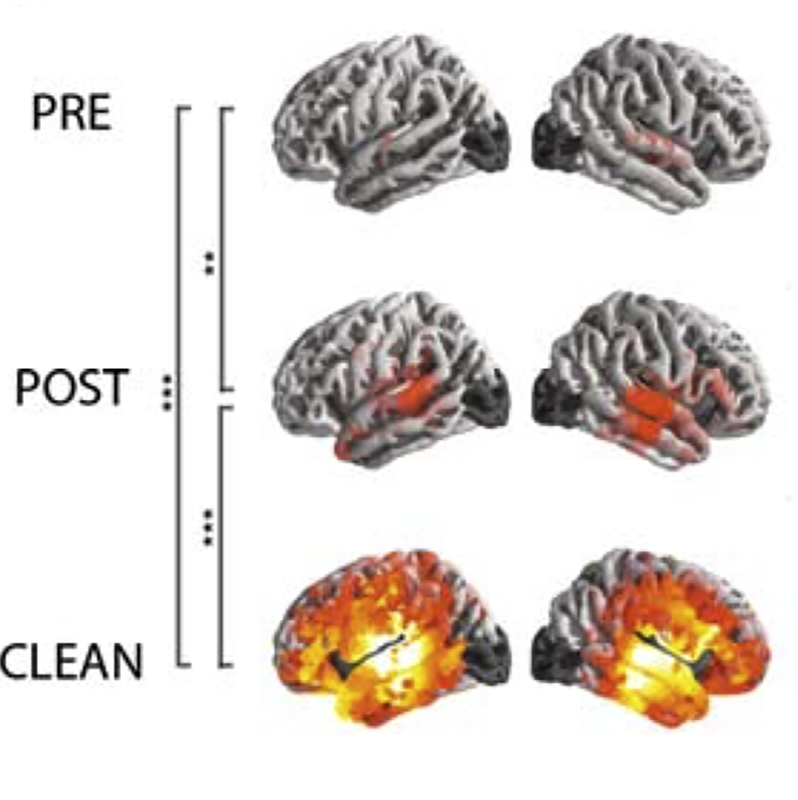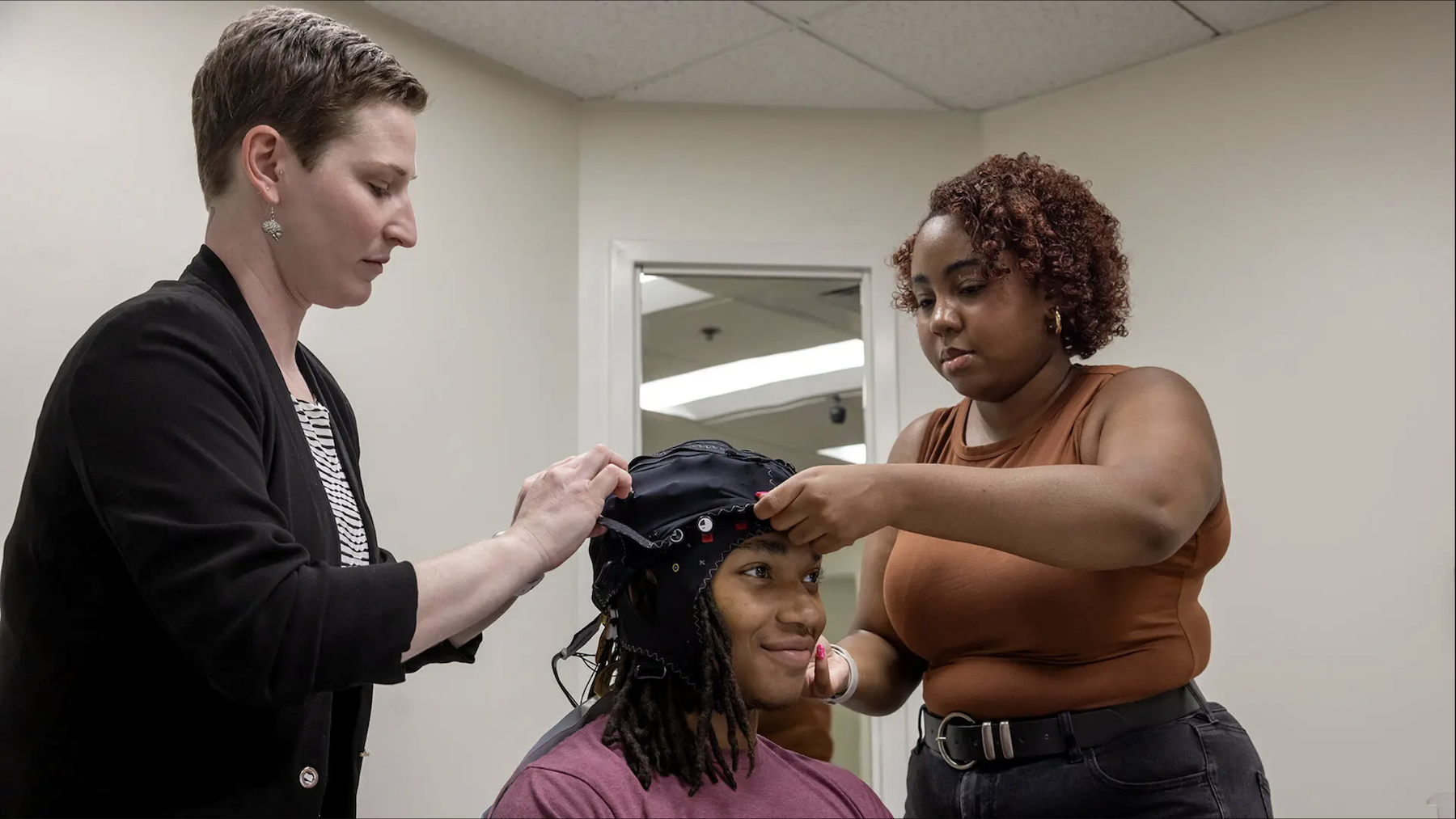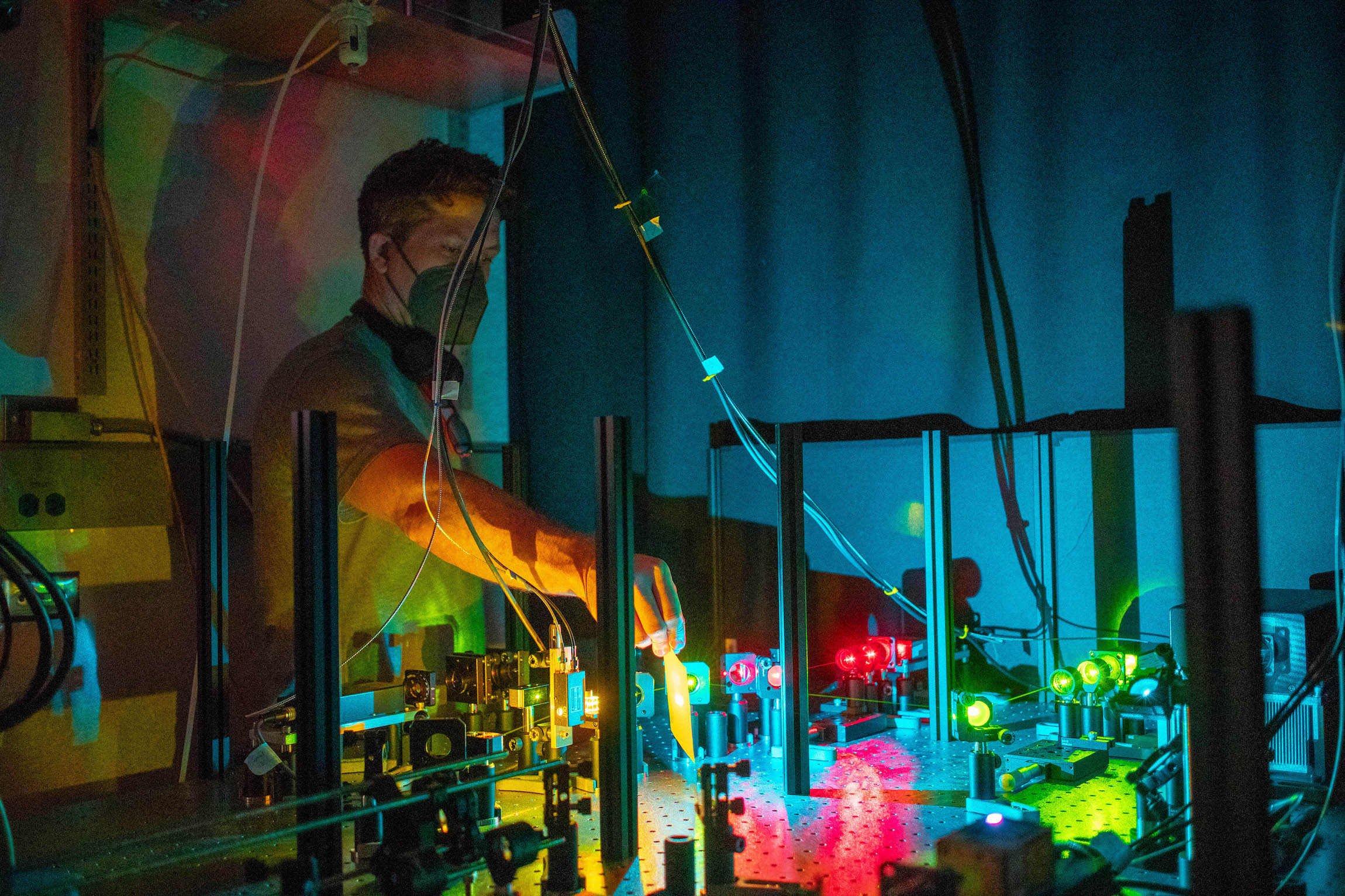News Story
Quinlan finds crucial on-off switch in visual development

A discovery by a University of Maryland-led research team offers hope for treating serious visual problems that are permanent unless corrected in early childhood.
COLLEGE PARK, Md - A new discovery by a University of Maryland-led research team offers hope for treating “lazy eye” and other serious visual problems that are usually permanent unless they are corrected in early childhood.
Amblyopia afflicts about three percent of the population, and is a widespread cause of vision loss in children. It occurs when both eyes are structurally normal, but mismatched – either misaligned, or differently focused, or unequally receptive to visual stimuli because of an obstruction such as a cataract in one eye.
During the so-called “critical period” when a young child’s brain is adapting very quickly to new experiences, the brain builds a powerful neural network connecting the stronger eye to the visual cortex. But the weaker eye gets less stimulation and develops fewer synapses, or points of connection between neurons. Over time the brain learns to ignore the weaker eye. Mild forms of amblyopia such as “lazy eye” result in problems with depth perception. In the most severe form, deprivation amblyopia, a cataract blocks light and starves the eye of visual experiences, significantly altering synaptic development and seriously impairing vision.
Because brain plasticity declines rapidly with age, early diagnosis and treatment of amblyopia is vital, said neuroscientist Elizabeth M. Quinlan, an associate professor of biology at UMD. If the underlying cause of amblyopia is resolved early enough, the child’s vision can recover to normal levels. But if the treatment comes after the end of the critical period and the loss of synaptic plasticity, the brain cannot relearn to see with the weaker eye.
“If a child is born with a cataract and it is not removed very early in life, very little can be done to improve vision,” Quinlan said. “The severe amblyopia that results is the most difficult to treat. For that reason, science has the most to gain by a better understanding of the underlying mechanisms.”
Quinlan, who specializes in studying how communication through the brain’s circuits changes over the course of a lifetime, wanted to find out what process controls the timing of the critical period of synaptic plasticity. If researchers could find the neurological on-off switch for the critical period, she reasoned, clinicians could use the information to successfully treat older children and adults.
Researchers in Quinlan’s University of Maryland lab teamed up with the laboratory of Alfredo Kirkwood at Johns Hopkins University to address two questions: What are the age boundaries of the critical period for synaptic plasticity, when it comes to determining eye dominance? And what developmental processes are involved?
Experiments in rodents suggested the timing of the critical period is controlled by a specific class of inhibitory neurons, which come into play after a visual stimulus activates excitatory neurons that link the eye to the visual cortex. The inhibitory neurons act as signal controllers, affecting the interactions between excitatory neurons and synapses.
“The generally accepted view has been that as the inhibitory neurons develop, synaptic plasticity declines, which was thought to occur at about five weeks of age in rodents,” roughly equivalent to five years of age in humans, Quinlan said. But in earlier experiments, Quinlan and Kirkwood found no correlation between the development of these inhibitory neurons and the loss of plasticity. In fact, they found the visual circuitry in rodents was highly adaptable at ages beyond five weeks.
In their latest research the UMD-led team looked “one synapse upstream from these inhibitory neurons,” Quinlan said, studying the control of that synapse by a protein called NARP (Neuronal Activity-Regulated Pentraxin). Working with two sets of mice – one group genetically similar to wild mice and another that lacked the NARP gene - the researchers covered one eye in each animal to simulate conditions that produce amblyopia.
The mice that were genetically similar to wild mice developed amblyopia, with characteristic dominance of the normal eye over the deprived eye. But the mice that lacked NARP did not develop amblyopia, regardless of age or the length of time one eye was deprived of stimulation.
The study, published in the current issue of the peer-reviewed journal Neuron, demonstrated that only one specific class of synapses was affected by the absence of NARP. Without NARP, the mice simply had no critical period in which the brain circuitry was weakened in response to the impaired blocking vision in one eye, Quinlan said. Except for the lack of this plasticity, their vision was normal.
“It’s remarkable how specific the deficit is,” Quinlan said. Without the NARP protein, “these animals develop normal vision. Their brain circuitry just isn’t plastic. We can completely turn off the critical period for plasticity by knocking out this protein.”
Since there are indications that NARP levels vary with age, the discovery raises hope that a treatment targeting NARP levels in humans could allow correction of amblyopia late in life, without affecting other aspects of vision.
Funding for this research was provided by the National Eye Institute, a part of the National Institutes of Health.
Published August 1, 2013









